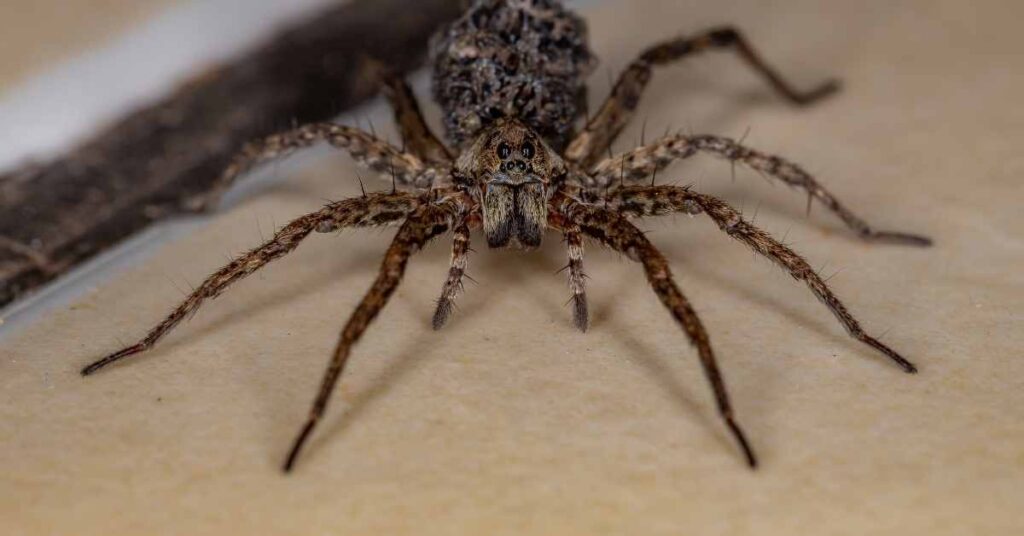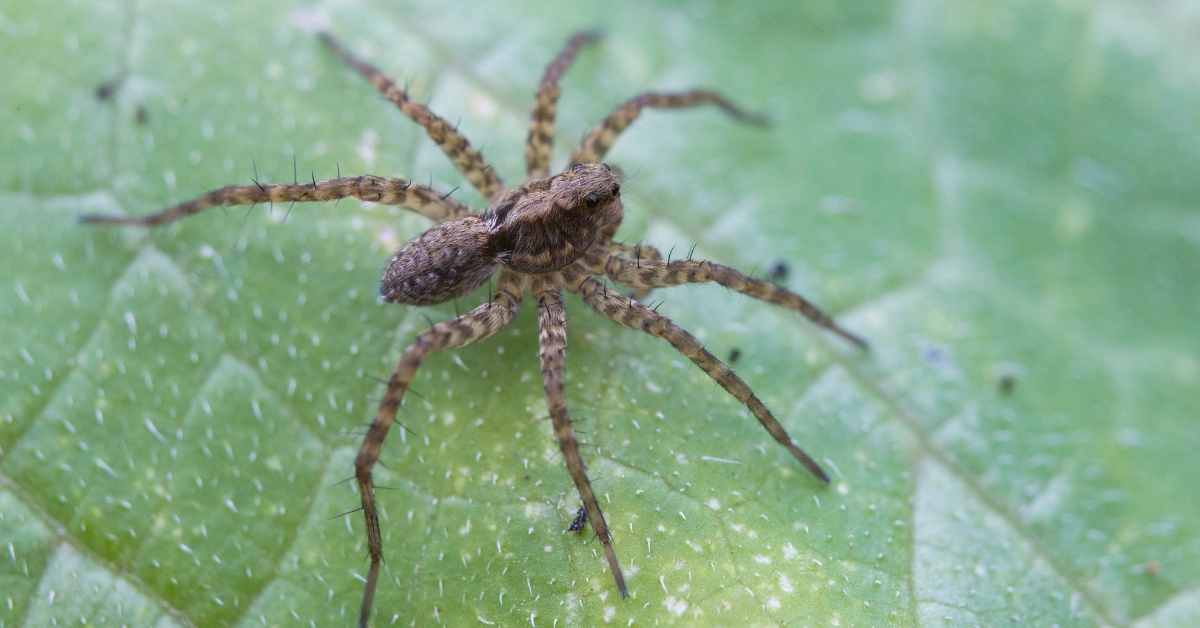Wolf spider California (family Lycosidae) is a common inhabitant of diverse landscapes in California. These fascinating arachnids are often misunderstood due to their intimidating appearance and the general public’s aversion to spiders. However, wolf spiders are an integral part of California’s ecosystem, playing a crucial role in controlling insect populations and maintaining the balance of natural habitats.
In this article, we will explore the world of wolf spiders in California, discussing their characteristics, behavior, habitat, and ecological importance. We’ll also dive into their relationship with humans, debunking myths and highlighting the benefits of coexisting with these essential predators.
1. Introduction to Wolf Spiders
Wolf spider California are part of the Lycosidae family, which includes more than 2,800 species worldwide. In California, there are several species of wolf spiders, each adapted to the state’s varied climates and environments. These spiders are typically characterized by their robust bodies, long legs, and keen eyesight, making them formidable hunters.
Unlike many other spiders, Wolf spider California do not spin webs to catch prey. Instead, they rely on their speed and agility to chase down and ambush their targets. This active hunting behavior sets them apart from other spiders and has earned them the name “wolf spider.”
Physical Characteristics
Wolf spider California are medium to large-sized spiders, with body lengths ranging from 10 to 35 millimeters, depending on the species. They have eight eyes arranged in three rows, which give them excellent vision for detecting movement and hunting prey. Their bodies are typically brown or gray, often with camouflage patterns that help them blend into their surroundings.
One of the most distinctive features of Wolf spider California is their powerful legs, which allow them to sprint quickly when pursuing prey or escaping danger. These spiders are also known for carrying their egg sacs on their abdomens, and once the spiderlings hatch, they ride on the mother’s back until they are ready to disperse.
Behavior and Hunting Style
Wolf spiders are solitary hunters. They rely on stealth, patience, and speed to capture a wide variety of insects and other small invertebrates. Their diet includes crickets, grasshoppers, ants, beetles, and even smaller spiders. At night, wolf spiders become more active, using their enhanced vision to stalk prey.
These spiders are known for their unique hunting style, which involves stalking and ambushing their prey rather than waiting for it to stumble into a web. They can sense vibrations in the ground, allowing them to detect nearby movement, and they will pounce on their prey with incredible speed and precision.
2. Wolf Spider Species in California
California is home to a variety of wolf spider species, each adapted to specific habitats ranging from deserts to forests to coastal regions. Some of the most common species found in the state include:
2.1. Hogna carolinensis (Carolina Wolf Spider)
The Carolina wolf spider is one of the largest species of wolf spiders found in North America, including California. It can grow up to 35 millimeters in body length, making it an imposing predator in the arachnid world. This species is usually found in open habitats such as fields, grasslands, and deserts.
2.2. Pardosa spp. (Thin-legged Wolf Spiders)
Pardosa species are smaller than Hogna species, typically ranging between 6 and 12 millimeters in length. These wolf spiders are commonly found near water sources, such as rivers and streams, where they hunt small insects that live around the water’s edge. Pardosa wolf spiders are fast runners and agile hunters, making them well-suited to their environment.
2.3. Geolycosa spp. (Burrowing Wolf Spiders)
Geolycosa species are known for their burrowing behavior. Wolf spider California dig deep burrows in the ground, which they use as both a home and a base for hunting. They wait near the entrance of their burrows for passing insects and ambush them when the opportunity arises. Geolycosa wolf spiders are particularly well-adapted to arid regions of California, such as the Mojave Desert.
3. Habitat and Distribution

Wolf spider California is highly adaptable and can be found in a wide range of habitats across California. They thrive in forests, grasslands, deserts, agricultural fields, and even urban environments. Their adaptability allows them to survive in various conditions, from the dry heat of the Central Valley to the cool, moist forests of Northern California.
Forested Areas
In the forests of Northern California, wolf spider can be found among leaf litter, fallen logs, and under rocks. These areas provide ample cover and prey, making them ideal habitats for hunting. Wolf spiders in these regions often prey on beetles, ants, and other forest-dwelling insects.
Grasslands and Agricultural Fields
In the open grasslands and agricultural fields, wolf spider California is a common predator of crop pests. Farmers often welcome their presence, as they help to naturally control populations of harmful insects like aphids, caterpillars, and beetles. These spiders are particularly important in organic farming systems, where chemical pesticides are avoided.
Desert and Coastal Regions
In the deserts of California, wolf spiders like the Geolycosa species have adapted to the harsh, arid conditions. Their burrowing behavior helps them escape the extreme heat of the day, and they emerge at night to hunt. Coastal regions also provide habitat for wolf spiders, where they can be found in sand dunes and coastal vegetation, preying on insects that live near the shore.
4. Ecological Importance
Wolf spider California play a critical role in maintaining the balance of California’s ecosystems. As generalist predators, they help regulate populations of insects and other small invertebrates, preventing outbreaks of pests that could otherwise harm crops, plants, and trees.
Pest Control
One of the most significant ecological benefits of wolf spiders is their ability to control pest populations. In agricultural settings, they serve as natural pest control agents by preying on insects that damage crops. This reduces the need for chemical pesticides, which can have harmful effects on the environment and non-target species.
Role in Food Webs
Wolf spider California is not only a predator but also prey for larger animals. Birds, reptiles, and small mammals often feed on wolf spiders, making them an essential part of the food web. By controlling insect populations and serving as a food source for other animals, wolf spiders contribute to the overall health and stability of ecosystems in California.
Biodiversity Indicators
Because wolf spiders are sensitive to changes in their environment, they can serve as indicators of ecosystem health. A healthy population of wolf spiders often suggests a balanced ecosystem with sufficient prey and suitable habitat. Conversely, a decline in wolf spider populations could indicate environmental stress, such as habitat loss or pollution.
5. Wolf Spiders and Humans
Although Wolf spider California may appear frightening to some people, they are generally harmless to humans. Their bites are not venomous and are no more dangerous than a bee sting. In fact, wolf spiders are beneficial to have around, as they help control the populations of insects like mosquitoes, flies, and ants, which can be more of a nuisance.
Misconceptions and Myths
Many people mistakenly believe that wolf spiders are aggressive and dangerous, but this is far from the truth. Wolf spiders are shy creatures that prefer to avoid human contact. They may bite in self-defense if they feel threatened, but their bites are not life-threatening.
One of the most common misconceptions about wolf spiders is that they are venomous. While they do have venom, it is primarily used to subdue their prey and is not harmful to humans. Most bites result in mild symptoms, such as redness, swelling, or itching, which go away after a short period.
Coexisting with Wolf Spiders
In California, wolf spiders are commonly found in gardens, yards, and even homes. Rather than fearing them, homeowners can appreciate the role these spiders play in controlling insect populations. Wolf spiders are natural pest controllers, reducing the need for chemical insecticides that can harm the environment.
If a wolf spider is found indoors, the best course of action is to carefully capture it and release it outside, where it can continue its beneficial work in the garden. Wolf spiders are not social creatures and do not form colonies, so finding one indoors is usually an isolated event.
6. Conservation of Wolf Spiders
While Wolf spider California are not currently listed as endangered or threatened, their populations can be affected by habitat destruction, pesticide use, and climate change. As natural habitats are lost to urbanization and agriculture, wolf spiders may struggle to find suitable environments in which to live and hunt.
Habitat Preservation
Preserving natural habitats is essential for the conservation of wolf spider populations. In California, efforts to protect forests, grasslands, and wetlands also benefit the many species of Wolf spider California that call these areas home. Conservation programs that focus on maintaining biodiversity help ensure that wolf spiders and other important predators can continue to thrive.
Sustainable Farming Practices
In agricultural settings, adopting sustainable farming practices can help support wolf spider populations. Reducing the use of chemical pesticides, planting cover crops, and maintaining natural vegetation around fields all contribute to creating a habitat where wolf spiders can flourish. By encouraging the presence of wolf spiders, farmers can also benefit from their natural pest control services.
7. The Future of Wolf Spiders in California
As climate change and habitat loss continue to impact ecosystems across the globe, the future of Wolf spider California is uncertain. Changes in temperature, rainfall patterns, and land use can all affect the availability of prey and suitable habitats for these spiders.
Climate Change Impacts
Climate change poses a significant threat to many species, including Wolf spider California. Rising temperatures and altered weather patterns can disrupt the delicate balance of ecosystems, making it more difficult for wolf spiders to find food and shelter. In arid regions like the deserts of California, prolonged droughts could reduce the availability of prey, leading to population declines of Wolf spider California. Similarly, extreme weather events, such as wildfires and floods, can destroy habitats, forcing wolf spiders to either relocate or face survival challenges. As climate change continues to affect California’s landscapes, Wolf spider California and other species may need to adapt or migrate to new areas in search of suitable conditions.

Urbanization and Habitat Fragmentation
Urbanization is another significant threat to Wolf spider California. As California’s cities and suburbs expand, natural habitats are being replaced by concrete, roads, and buildings. Habitat fragmentation isolates populations of wolf spiders, making it difficult for them to move freely, find mates, and maintain healthy populations.
In urban areas, wolf spider may be forced to live in smaller, fragmented habitats, such as parks and gardens. While some species are adaptable, the loss of large, continuous habitats can negatively impact the overall biodiversity, leading to reduced populations of wolf spiders and other wildlife.
Conservation Efforts for Wolf Spiders
To ensure the future of wolf spider in California, it is crucial to promote conservation efforts that protect natural habitats and reduce human impact on the environment. Educating the public about the importance of wolf spiders and other beneficial species can help reduce fear and promote coexistence.
Conservation strategies should include:
- Habitat protection and restoration: Ensuring that forests, grasslands, wetlands, and other natural areas remain intact and protected from development is essential for the survival of wolf spiders and other species. Restoration efforts can also help revive degraded habitats and make them suitable for wildlife again.
- Sustainable land-use practices: Encouraging farmers, ranchers, and landowners to adopt sustainable land-use practices can benefit wolf spiders and other beneficial predators. By reducing the use of pesticides and maintaining natural vegetation, these practices can create a more hospitable environment for spiders and other wildlife.
- Climate change mitigation: Efforts to combat climate change, such as reducing greenhouse gas emissions and protecting carbon-sequestering ecosystems, are essential to preserving the future of wolf spiders. Slowing the pace of climate change can give species like wolf spiders more time to adapt to changing conditions.
8. Wolf Spider Research and Scientific Studies
Research on wolf spiders is critical for understanding their behavior, ecology, and the challenges they face in a rapidly changing world. Over the years, scientists have conducted numerous studies on Wolf spider California and around the world to learn more about their role in ecosystems and how they adapt to environmental changes.
Behavioral Studies
One area of research focuses on the behavior of Wolf spider California, particularly their hunting techniques, mating rituals, and territoriality. By observing Wolf Spider California in their natural habitats, researchers have gained insights into how these spiders communicate, find prey, and select mates.
For example, male wolf spiders often perform elaborate courtship displays to attract females. These displays involve a combination of visual signals, such as leg-waving and body vibrations, and chemical signals, such as pheromones. Studying these behaviors helps scientists understand how wolf spiders reproduce and maintain genetic diversity within their populations.
Ecological Impact Studies
Another important area of research is the ecological impact of Wolf spider California on insect populations and ecosystems. Studies have shown that wolf spiders can significantly reduce the abundance of agricultural pests, providing natural pest control services that benefit farmers and the environment.
Ecologists have also studied the effects of wolf spiders on food webs and species interactions. By understanding how wolf spiders fit into the larger ecosystem, researchers can assess their importance in maintaining biodiversity and ecological balance.
Climate Change and Adaptation Research
As climate change becomes a more pressing issue, researchers are also studying how wolf spiders respond to environmental stressors, such as rising temperatures and changes in precipitation. These studies can help predict how wolf spider populations may shift in the future and what conservation actions may be necessary to protect them.
9. The Importance of Public Education and Awareness
Raising public awareness about wolf spiders and their ecological significance is vital for promoting conservation efforts. Many people fear spiders due to misconceptions and a lack of understanding about their behavior and role in nature. By educating the public about the benefits of wolf spiders, we can foster a more positive attitude toward these valuable predators.
Dispelling Myths About Wolf Spider California
One of the main barriers to wolf spider conservation is the widespread fear of spiders. Through public education campaigns, community outreach, and school programs, people can learn to appreciate wolf spiders as natural pest controllers and important members of the ecosystem. Dispelling myths about wolf spiders—such as the idea that they are dangerous or aggressive—can help reduce unnecessary killing of these beneficial creatures.
Promoting Backyard Habitats
Homeowners can play a role in wolf spider conservation by creating spider-friendly habitats in their own yards and gardens. Planting native vegetation, avoiding the use of chemical pesticides, and providing shelter, such as rocks, logs, and leaf litter, can create a more welcoming environment for wolf spiders and other beneficial predators.
Encouraging urban dwellers to value the presence of spiders in their homes and gardens can also reduce the number of spiders killed out of fear or misunderstanding. Simple actions, such as gently relocating a spider found indoors to the garden, can help support wolf spider populations in urban areas.
Citizen Science Projects
Citizen science initiatives can also engage the public in wolf spider research and conservation. By participating in spider surveys, monitoring programs, or wildlife observation projects, individuals can contribute valuable data to scientists studying spider populations and their habitats.
In California, several organizations and universities collaborate with the public on wildlife monitoring projects, allowing people to learn more about local species while contributing to scientific knowledge. These projects not only raise awareness but also help gather important information about the distribution and health of wolf spider populations.
10. Conclusion: Embracing Wolf Spider California as Environmental Allies
The wolf spiders of California, with their unique hunting abilities and vital role in controlling insect populations, are essential components of the state’s ecosystems. Despite their fearsome appearance, these spiders are not only harmless to humans but also highly beneficial. By reducing pest populations, supporting biodiversity, and serving as indicators of environmental health, wolf spiders play a critical role in maintaining the ecological balance.
As California continues to face challenges such as habitat loss, climate change, and urbanization, it is more important than ever to recognize the value of species like Wolf spider California. Conservation efforts that focus on habitat preservation, sustainable land use, and public education can help ensure that wolf spiders remain a thriving part of California’s natural landscape.
By learning to coexist with these fascinating creatures and appreciating their ecological importance, we can take steps toward a more sustainable and balanced environment. Wolf spiders, like many other species, are integral to the health of ecosystems, and their conservation is crucial for the future of California’s biodiversity.
Read More: Baby Orangutan: The Precious Future of an Endangered Species

